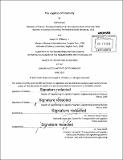| dc.contributor.advisor | Roberto Perez-Franco. | en_US |
| dc.contributor.author | Brady, Collin (Collin Patrick) | en_US |
| dc.contributor.author | Williams, Joseph H | en_US |
| dc.contributor.other | Massachusetts Institute of Technology. Engineering Systems Division. | en_US |
| dc.date.accessioned | 2015-11-09T19:50:00Z | |
| dc.date.available | 2015-11-09T19:50:00Z | |
| dc.date.copyright | 2015 | en_US |
| dc.date.issued | 2015 | en_US |
| dc.identifier.uri | http://hdl.handle.net/1721.1/99805 | |
| dc.description | Thesis: M. Eng. in Logistics, Massachusetts Institute of Technology, Engineering Systems Division, 2015. | en_US |
| dc.description | Cataloged from PDF version of thesis. | en_US |
| dc.description | Includes bibliographical references (pages 112-114). | en_US |
| dc.description.abstract | Retail fashion sales inherently involve the promotion and presentation of products that need to be differentiated from all other products in the crowded market. While the products themselves can exhibit some unique characteristics, the actual presentation of the products can help to make them appear unique and lend additional perceived value to them so that consumers will purchase them. Such a marketing technique requires an extreme commitment to creativity in terms of the methods of display and the associated non-sale items used to showcase the products available for purchase. For a particular fashion retailer, this manifests itself in the acquisition of specialty items that often become permanent elements of the display inventory. The commitment to the creative process is often at odds with the logistics required to procure, transport, install and store the display items which has resulted in a number of critical issues for the retailer. The resulting operational difficulties have reduced efficiency and increased the time required for logistics operations, and create unsafe conditions for the logistics team members. This thesis takes a closer look at the problem and its root causes, and suggests specific actions to ameliorate the current circumstances and build a foundation for improved operations in the future. Through analysis of mini-case studies and the behavioral aspects behind them, the thesis determines the root causes of the issues and identifies strategies to address them. The thesis identifies the overcrowded warehouse as the nexus between the creative and logistics teams and addresses the capacity issue within as the quintessential symptom of the problems facing the retailer. The thesis concludes by detailing recommendations for process improvement and the benefits therein. | en_US |
| dc.description.statementofresponsibility | by Collin Brady and Joseph H. Williams, Jr. | en_US |
| dc.format.extent | 114 pages | en_US |
| dc.language.iso | eng | en_US |
| dc.publisher | Massachusetts Institute of Technology | en_US |
| dc.rights | M.I.T. theses are protected by copyright. They may be viewed from this source for any purpose, but reproduction or distribution in any format is prohibited without written permission. See provided URL for inquiries about permission. | en_US |
| dc.rights.uri | http://dspace.mit.edu/handle/1721.1/7582 | en_US |
| dc.subject | Engineering Systems Division. | en_US |
| dc.title | The logistics of creativity | en_US |
| dc.type | Thesis | en_US |
| dc.description.degree | M. Eng. in Logistics | en_US |
| dc.contributor.department | Massachusetts Institute of Technology. Engineering Systems Division | |
| dc.identifier.oclc | 927167766 | en_US |
